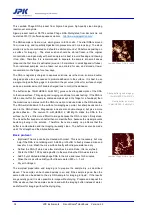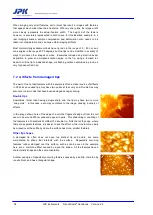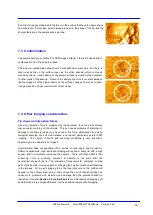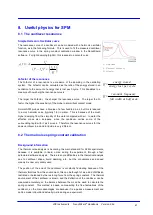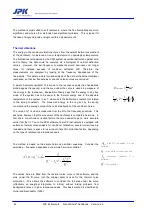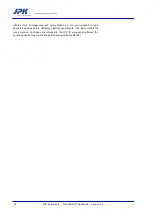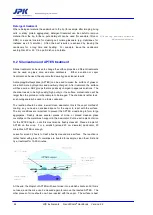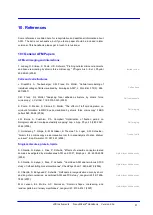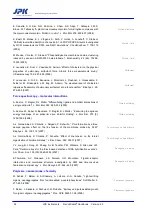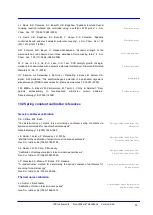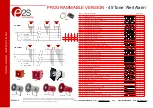
44
JPK Instruments NanoWizard
®
Handbook Version 2.2
The shape of the cantilever is also important for thermal noise analysis, because
the way that the cantilever bends depend on its geometry. Factors have been
calculated for rectangular cantilevers (Butt and Jaschke), and computed using finite
element analysis for a particular example of a triangular cantilever (Stark 2001).
For a fully accurate absolute force measurement, there are probably other minor
correction factors that are required for particular hydrodynamic drag functions, or
other simplifying assumptions in the model. However, at some point the significant
errors from other parts of the measurement become more important.
Conclusions
It is realistic to expect errors in the range of 10-20% when comparing different
cantilever calibrations, depending on the tip shape and spring constant. The speed
and convenience of the thermal noise method means it is becoming established as
a standard method, despite its limitations. It is very valuable to be able to check the
spring constant in liquid, and this enables the individual calibration of each
cantilever as it is used. As long as the calibration method is consistent and carefully
done, the results are reasonably reliable. For better consistency (translating into
narrower force histograms) it is best to combine results from force curves using the
same type of cantilever, where the shape differences are minimized.
The online SPM software from JPK Instruments is equipped with automatic thermal
noise analysis for cantilever calibration, fixed corrections for temperature, mounting
angle etc. are included in the settings. In addition there is space for user input of
specific correction factors. This extra correction factor is set to 1 by default, that is to
say the calculation does not take into account corrections such as those described
by Butt and Jaschke (Nanotechnology 1995). By editing this value (for instance to
0.817, as in the example above), correction factors can be included depending on
the type of cantilever and resonance peak.
In reality, for many AFM force experiments the extra correction factors are
neglected and the results will still be within a reasonable range. The calibration of
individual cantilevers is the most important factor for obtaining reliable force
measurements. If absolute force values are important, it may be worth including
different factors, depending on the cantilever shape. If, however, the second or
higher peaks are used then it is important to use the factors, as they are much more
significant than for the first peak. In addition, it is important to include factors for all
the peaks (including the first), if results between peaks are being compared.
See the
References Section 10
for the list of literature about spring constant and
thermal noise calibration.







